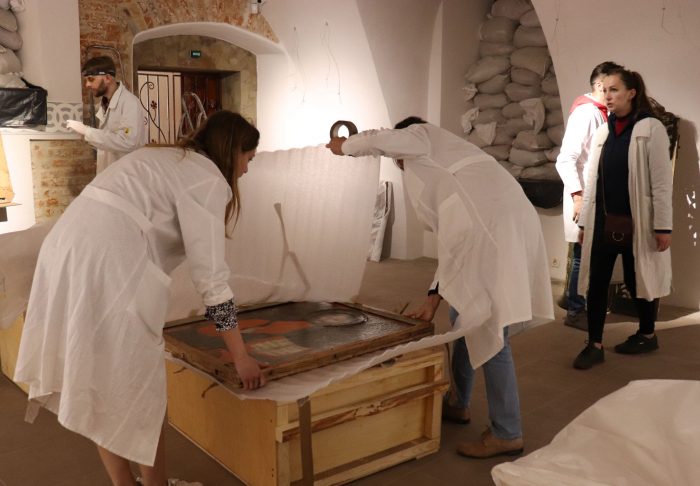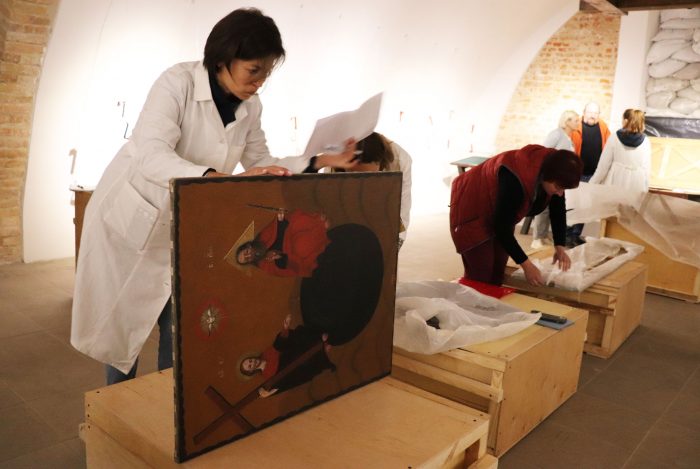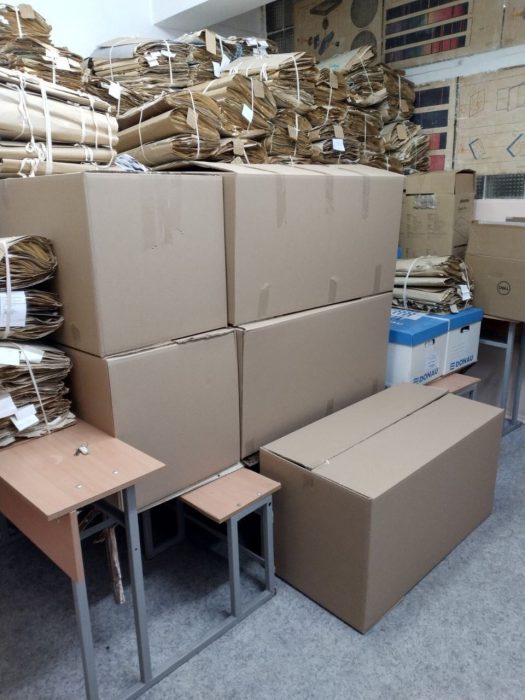The Smithsonian stands with Ukraine: Our efforts to preserve cultural heritage in a war zone
As the tragic invasion of Ukraine continues to unfold, the Smithsonian stands with the people of Ukraine during their most urgent time of need. As an institution, we are working on ways we can most effectively help, including developing plans with our partners to host displaced and at-risk scholars.


Compounding the humanitarian crisis is a threat to irreplaceable cultural heritage, abundant in a nation home to seven world heritage sites. The Ivankiv Historical and Local History Museum, including many works by noted Ukrainian artist Maria Prymachenko, has already been destroyed in the war. And a missile hit the site of the Babyn Yar Holocaust Memorial outside Kyiv that honors the 33,000 Jewish people killed by Nazis there during World War II.
The Smithsonian’s Cultural Rescue Initiative was created to help protect architecture, artifacts, and other objects of cultural and religious heritage from natural disasters, climate change, political instability, and wars. SCRI projects include cultural rescue work in Haiti, Syria, Iraq, Egypt, Mali, Nepal, and the U.S., as well as disaster training for heritage colleagues, first responders, and military personnel around the world.
Our experts work with a large network of domestic and international museums, regional organizations, localized NGOs, and government agencies to preserve cultural heritage and we are bringing those resources to bear on the ground in Ukraine.
When we lose irreplaceable history and culture, it is a profound loss to us all. If we instead work together to celebrate, share, and protect cultural heritage, we are ensuring the triumph of our humanity.
Secretary Lonnie Bunch
SCRI is in communication with contacts in-country who have participated in previous First Aid for Cultural Heritage in Times of Crisis coursework. SCRI also continues its work with the Cultural Heritage Monitoring Lab, our research partnership with the Virginia Museum of Natural History, which is using geospatial information system data to assess damage to cultural sites. We remain in active contact with our interagency partners through the Cultural Heritage Coordinating Committee chaired by the U.S. Department of State and continue to facilitate the sharing of data and knowledge.
SCRI presented an informational webcast in June to bring viewers up to date on our efforts in Ukraine. We present it here for those unable to attend in person,
Cultural preservation is vital to the Smithsonian because culture itself is vital to our shared future. The beauty of Ukraine’s art, architecture, literature, and music has flourished for decades; its museums are some of the most revered in Europe. If we are to attain a time when people of all cultures, faiths, and nationalities can peacefully coexist, we must first understand ourselves and each other. Cultural heritage like that of the Ukrainian people helps us do so. When we lose irreplaceable history and culture, it is a profound loss to us all. If we instead work together to celebrate, share, and protect cultural heritage, we are ensuring the triumph of our humanity.

Posted: 5 July 2022
-
Categories:
Art and Design , Collaboration , Education, Access & Outreach , Feature Stories , History and Culture







